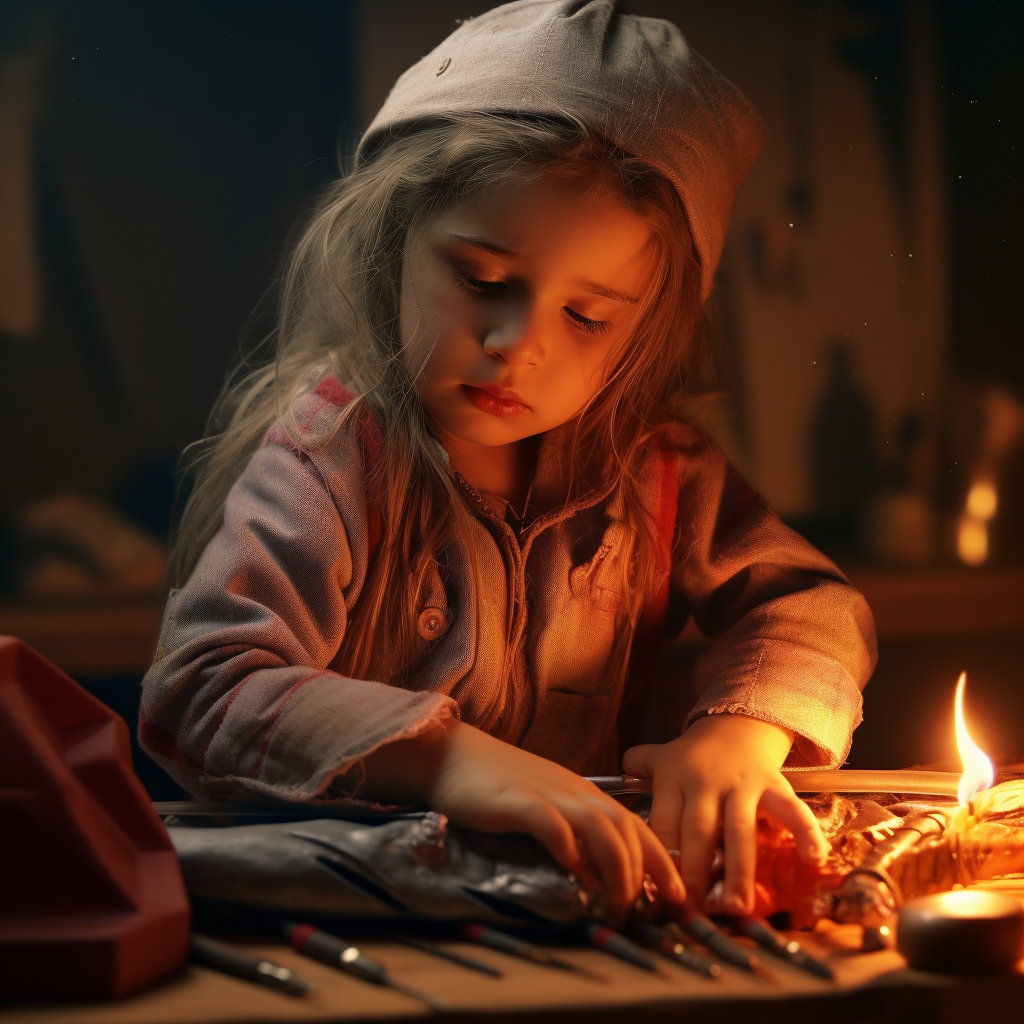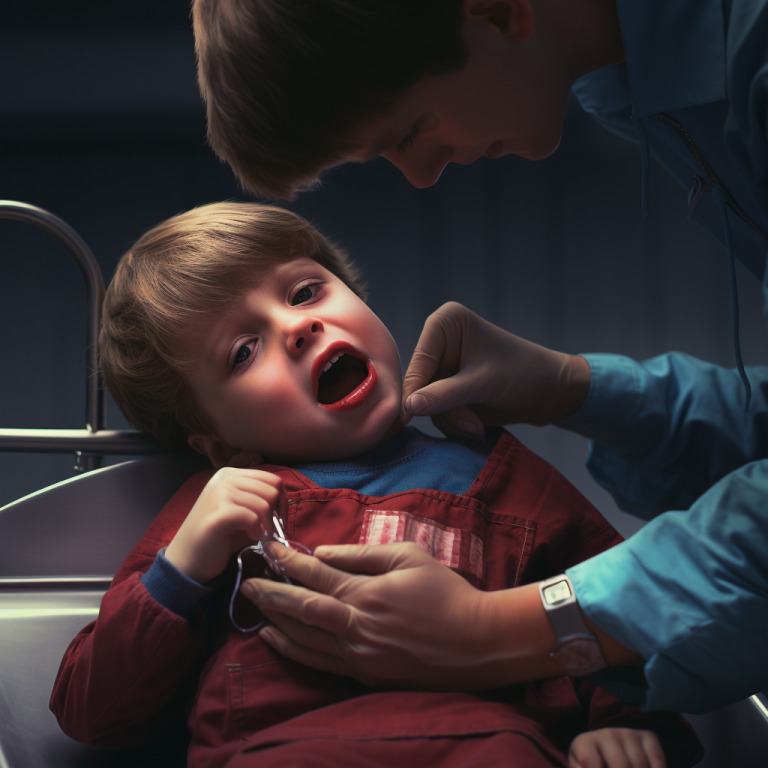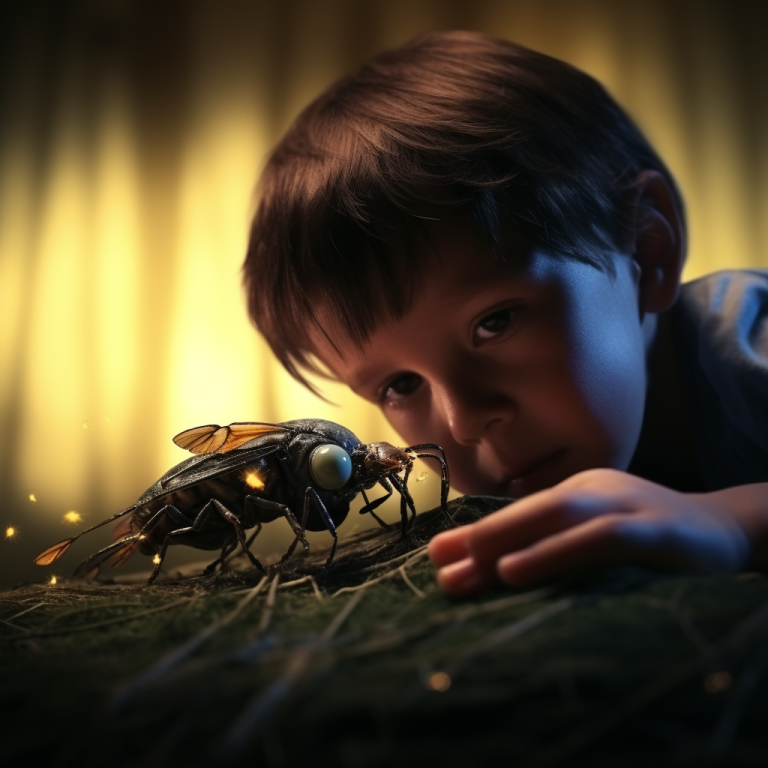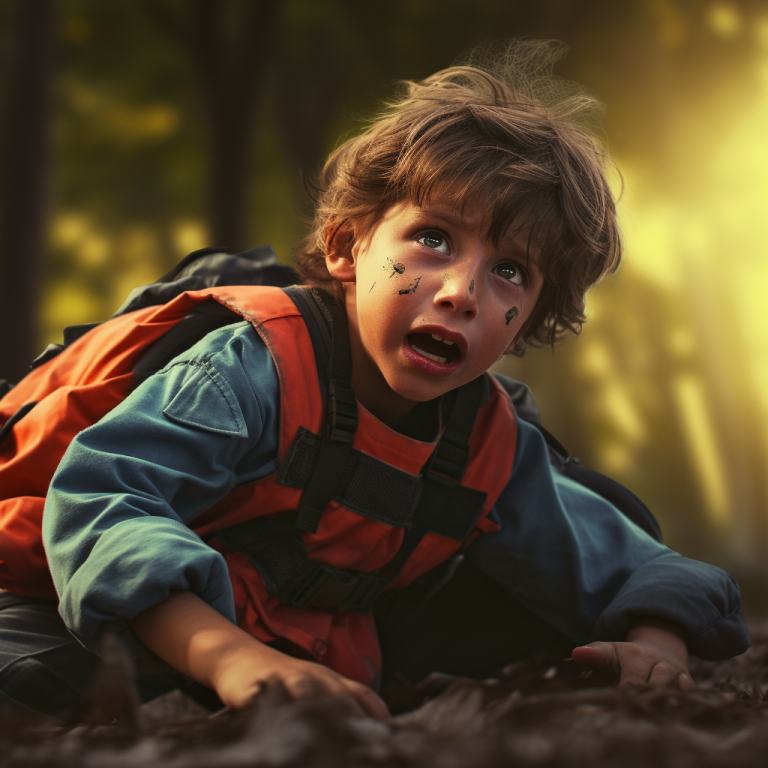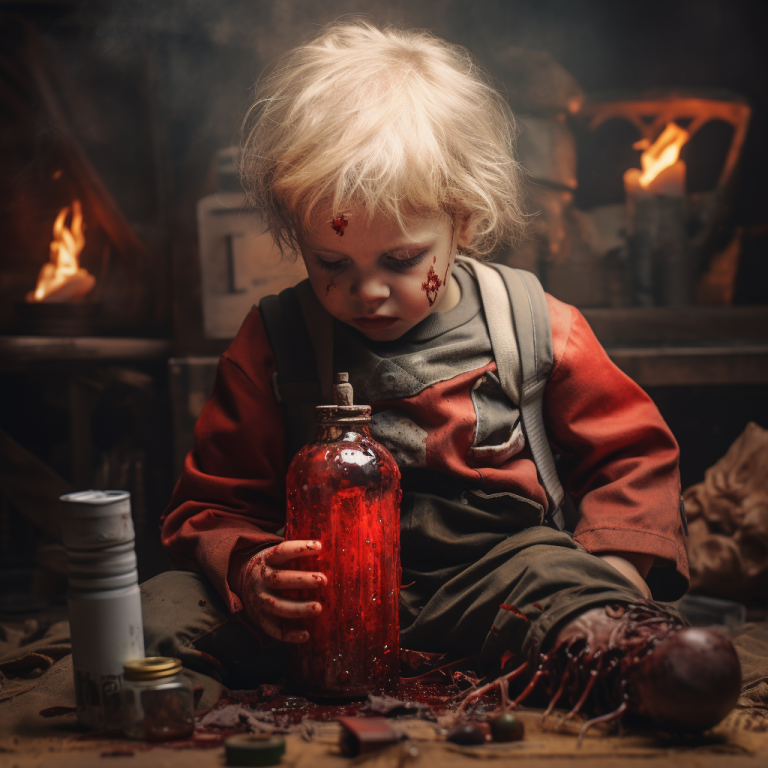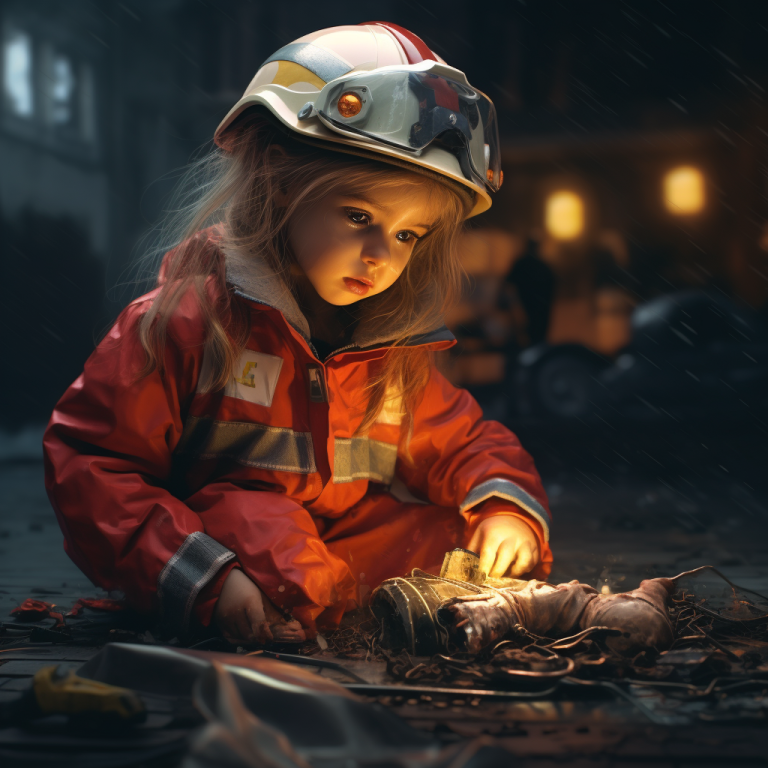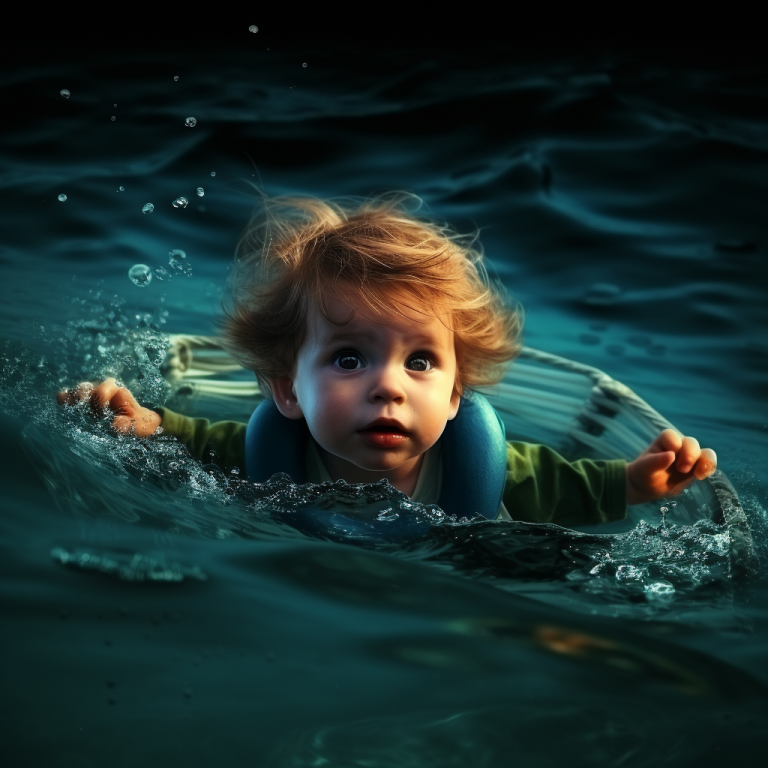First-Degree Burns
The skin is red, similar to a sunburn. The child experiences severe pain.
Second-Degree Burns
The burned skin is red and forms blisters filled with fluid. The child experiences severe pain.
Third-Degree Burns
The skin turns snow-white or bluish-black. The child no longer feels pain because the skin nerves have been destroyed.
Scalds
Injuries caused by hot steam or hot liquids are called scalds.
Actions:
- Stay calm and speak gently to the child.
- For large-area injuries, place the child under a shower or in a bathtub.
- Cool the scalded area with cool water (around 20°C) under running water for about 20 minutes.
- If possible, cover the child with the golden side of the rescue blanket.
- Never let the blanket touch the skin directly, as this causes intense pain. If you don’t have one, cover the child with a burn dressing or clean cloths.
- Do not give the child anything to eat or drink.
- Call emergency services (112) or go to the nearest clinic.
- For large scalds, always call emergency services (112).
- Important! Bring the vaccination card if readily available.
Important: The order is important in this case as “afterburns” can occur with heat injuries.
DO NOT do:
- Do not apply burn ointments or bandages as they restrict oxygen to the skin and trap heat, which can worsen the injury.
- Do not apply flour or powder to the wound. These stick to the wound and are difficult to remove.
- Do not apply healing plant oil, toothpaste, or tiger balm as they stick to the wound and cause additional burns.
- Ice or ice water may feel good initially, but they increase blood circulation, worsening pain. Strong cooling can cause cold damage to the skin.
- Attention! Children cool down very quickly!
Burns
Injuries caused by open flames, as well as firecrackers, are called burns.
Actions:
- Extinguish the fire source.
- Put out burning clothing with a blanket or a clothing item that is difficult to burn. Water can also be an alternative.
- Stay calm and reassure the child.
- If the burn is localized to a specific body part (hand, arm, foot), it is enough to cool only that part under running water.
- If the burn affects a larger body area, remove the child’s clothes. Do not force off burnt clothing!
- Place the child in the shower or bathtub and cool the area with about 20°C water for around 20 minutes.
- Cover the child with the golden side of the rescue blanket. Never let the blanket touch the skin directly, as this causes intense pain.
- If you don’t have one, cover the child with a burn dressing or clean cloths.
- Call emergency services (112) or go to the nearest clinic.
- For large burns, always call emergency services (112).

